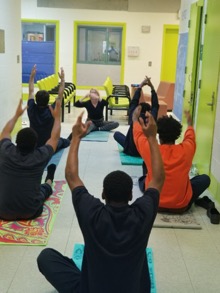AI, deportations, tariffs, and birthrate declines are reshaping America's workforce—blue- and white-collar alike. From baby boomer exits to AI disruptions, breaking down the workforce challenges no leader can afford to ignore.
Yes, We’re Bragging!

Normally this blog contains fresh-thinking ideas you can apply to cut turnover and improve engagement…all based on sound data and reinforced by the ideas and results of these applied solutions with our clients. This time, though, we just wanted to share some of their successes, and yes, brag just a bit about our part in them. The following are just three of our case studies from last year. Though we had many more 2018 success stories, these represented such widely different industries showing that any organization can make these types of positive changes.
Company names have been omitted. Each mini-case study
includes dollar savings to date based on the client’s own internal measures,
and these savings continue to grow. You may also note that each of the industries
we are showcasing have employees that are typically thought to be willing to
change jobs for fifty cents more per hour…but we have proven that is not so.
Each of these clients implemented the tools included in Finnegan’s Arrow™ and endorsed by Forbes, BusinessWeek, and other business publications:
1. Cut Manufacturing Turnover By 21%, Saving $285,000 Over A 9-Month Period
Imagine 275
employees going to work each day in a rural factory, hundreds of miles from any
city’s bright lights, building large metal products that require lifting,
bolting, and welding…with daily production goals that must be met before these
employees go home. With no robots nor automated assembly lines, this is the
type of old-style manufacturing that many say no longer exists in the U.S…but
we’ve learned from our clients there are many such factories in tiny-town,
rural locations.
Now imagine a team
of recruiters, one very committed trainer, and team leads and their supervisors
who became totally committed to reducing first-60-day turnover. After taking on
an ambitious goal, this team meets weekly in a dusty conference room off the
manufacturing floor, and in just 30 minutes they discuss by name every employee
in her first 60 days, asking What is their retention forecast? Who did their
most recent Stay Interview? What must we do to get this employee to our 60-day
finish line?
Next, this team
asks different questions about any employee who has left in their first
60-days, whether voluntarily or otherwise. Who screened this person first? How
was the training? Which team lead worked with this person first? This
discussion’s tone switches from hopeful achievement to accountability.
2. Cut Law Enforcement Voluntary Turnover By 74%, Saving $343,312 Over An 8-Month Period
Imagine going to work each day where clients spit on you and
worse, pay isn’t the best, and the state legislature must vote you a raise. The
job here is Juvenile Justice Officer I. These are the employees who provide
daily guidance to juveniles in detention centers, and that “guidance” includes
all forms of communications and physical restraint.
Our client’s top executive is titled Major, and our Major
first developed a realistic job preview that screened out applicants who were
unlikely to stay. Next, we trained supervisors to conduct Stay Interviews, and
the Major went first, listening to his direct reports and then encouraging them
to listen to theirs. One outcome was the employees didn’t feel safe so the
Major changed schedules to provide more onsite help, while also improving and
enforcing safety procedures.
More ideas came from the bottom up…to paint and improve
facilities, provide more recreation options, improve new-hire training, and
build a promotion pathway for those who sought more responsibility.
The picture below shows those we commonly call “juvenile
delinquents” doing yoga in their detention facility.

This peaceful, healthy scene was far less likely to happen
before our Major gathered bottom-up ideas from his team to improve not only
employee retention, but also a better environment to give our youth a better
chance to re-direct their lives.
3. Cut Meat Plant 60-Day Turnover By 45%, Saving $159,000 In A 5-Month Period
For many
organizations, cutting early turnover leads to cutting all turnover because getting employees started right leads to more
employees who stay a year or more.
We helped
this company by improving hiring including setting a one-year voluntary
retention expectation, and re-designing onboarding and combining it with
effective on-the-job training. Most important, though, was providing the plant
manager with the process and tools to drive accountability for his supervisors
to conduct Stay Interviews with new hires and achieve the retention goals
established specifically for each supervisor.
Do you want to cut your employee turnover by 21%,
45%, or 74%…and improve sales/service/safety too? Contact us at 844-RETAIN-U
for more information.



